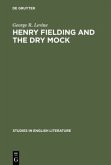High Quality Content by WIKIPEDIA articles! The irony mark or irony point is a proposed punctuation mark that was suggested to be used to indicate that a sentence should be understood at a second level (e.g. irony, sarcasm, etc.). It is illustrated by a small, elevated, backward-facing question mark. The irony mark has never been used widely. It appears occasionally in obscure artistic or literary publications. This mark ? was proposed by the French poet Alcanter de Brahm (alias Marcel Bernhardt) at the end of the 19th century. It was in turn taken by Hervé Bazin in his book Plumons l?Oiseau ("Pluck the bird", 1966), in which the author proposes several other innovative punctuation marks, such as the doubt point (Point de doute.svg), certitude point (Point de certitude.svg), acclamation point (Point d'acclamation.svg), authority point (Point d'autorité.svg), indignation point (Point d'indignation.svg), and love point (Point d'amour.svg).
Bitte wählen Sie Ihr Anliegen aus.
Rechnungen
Retourenschein anfordern
Bestellstatus
Storno








